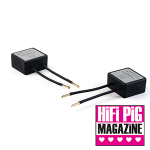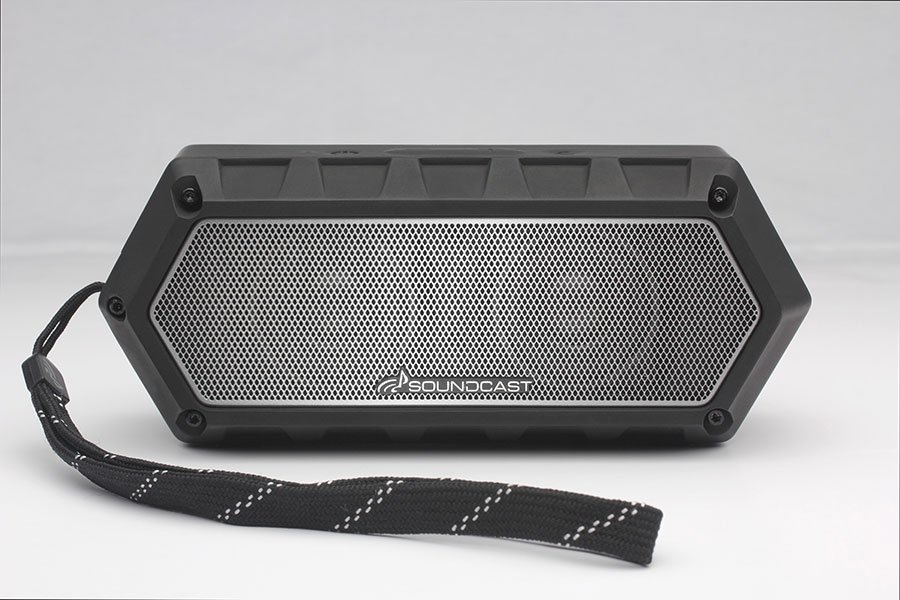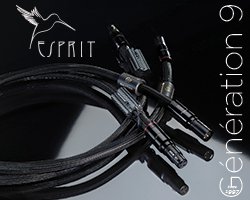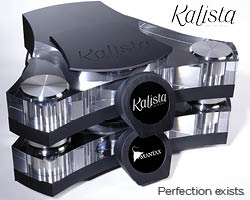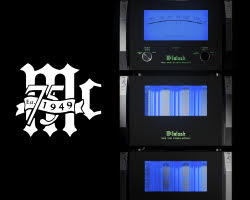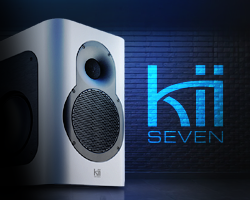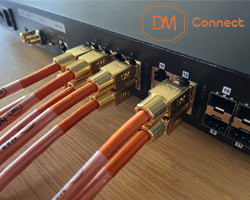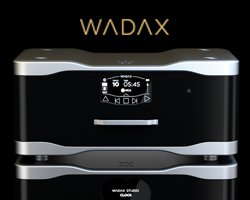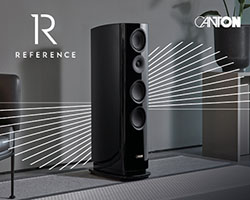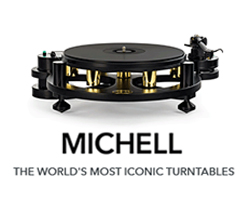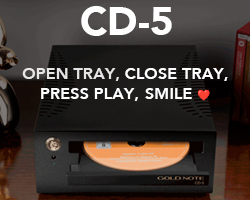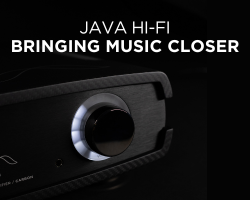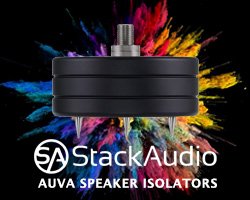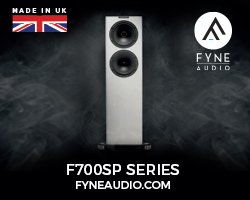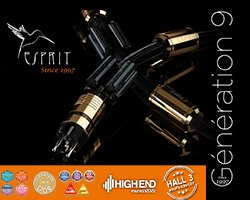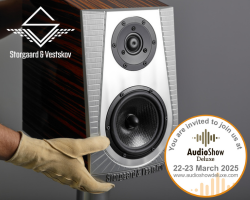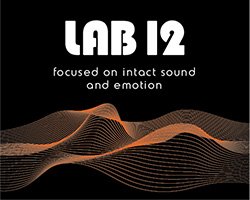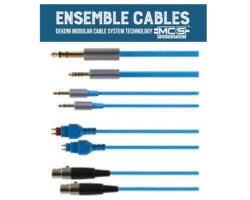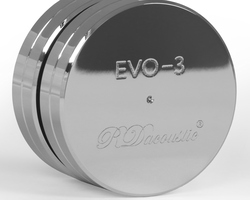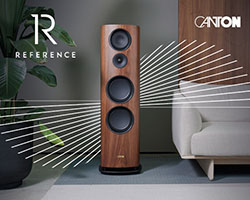CONNECTED FIDELITY SIX STAR DISTRIBUTION BLOCK REVIEW
The Connected Fidelity Six Star Distribution Block is the latest HiFi mains distribution unit by Connected Fidelity. In this review, Janine Elliot plugs into this sub £700 star-wired distribution block.
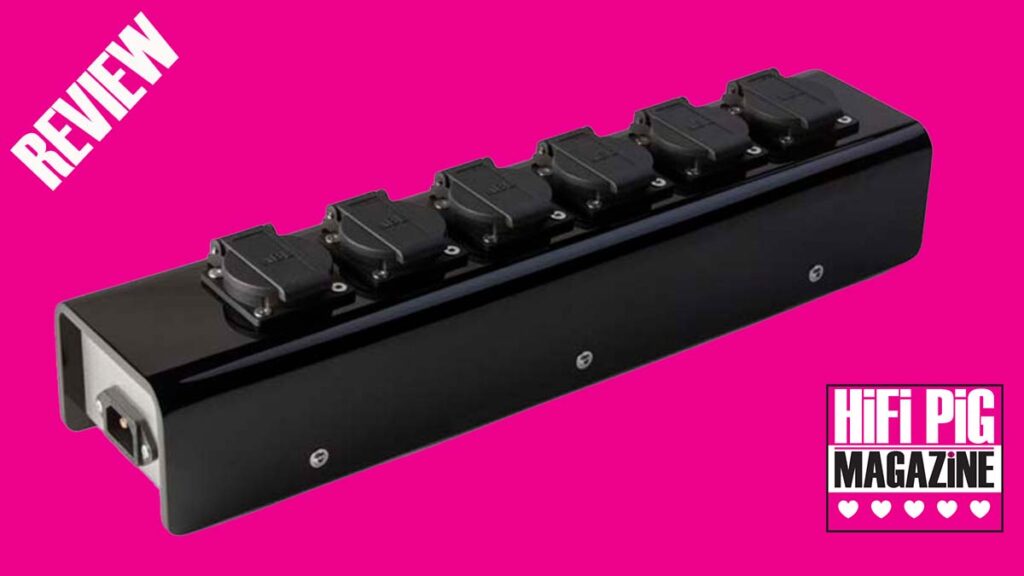
I have been playing around with various distribution boxes, mains conditioners and balanced mains units (BMU’s) for several years now, even helping in designing a few. I met Michael Osborn, CEO of Connected Fidelity, several years ago at a UK HiFi show and have been interested in their ‘Six Star’ six-way, star-wired distribution box, plus their AC-2K BMU and a good-looking turntable, the ‘TT Hub’. Having had 30 years in the HiFi industry, Michael’s CV includes designing and launching the Astin Trew brand, plus distributing brands such as Astell and Kern and Hana cartridges into the UK. During all this, the inveterate designer and builder has built his own products when similar ones just weren’t good enough for his own audiophile ears. He has also advised the development of products for other audiophiles. Products under his Oxfordshire Henley-on-Thames base ‘Connected Fidelity’ label include mains taming (including filters and fuses), plus cables and isolation.
The Six-Star was hand delivered by Michael himself, carefully packed in a box. The six-way power block had a black gloss plastic body with no indication of manufacturer or product until you looked at the opposite end to where you plug in the mains lead. It took me a few seconds to think about checking the other end for make/model! There you will also see a ground link as well – very useful. Available with either C14 (13A) or C19 (16A) IEC input socket it is priced at £669 or £689 (similar prices for Schuko and US sockets). The unit is also available with RF filter circuitry by adding £90. The unit sent to me for review had a built-in RF filter with an off/on rocker switch so I could easily check out if there were differences in sound. Also supplied was a 16 Amp Unity 2 mains cable with its UP-OCC earth wiring, internal cable damping layer, and high specification gold plated plug and socket. Michael recommends using the Unity 2 cable with the Star Six as it uses the same specification wire, and it is available to customers at a 40% discount if bought with the unit. Discounts arise, too, if you also buy their AC-2K balanced mains unit. They also do a cheaper Unity 1 mains cable.
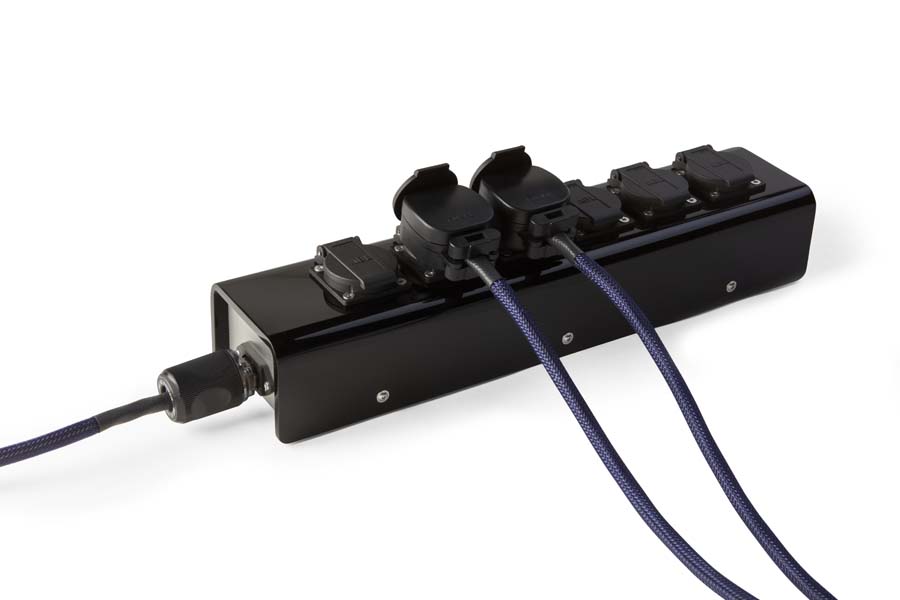
BUILD QUALITY AND FEATURES OF THE CF SIX STAR DISTRIBUTION BLOCK
The Six Star was originally developed for use with the AC-2K BMU, but as it worked so well on its own the company produced it separately, and as the BMU only has one output, you would need to purchase both if you wanted to go all the way to perfect mains. As Michael told me; “when we were happy with our results with balanced supply, we tried [the Six Star] direct from the wall socket and discovered that it was rather good used with LNE power from the grid as well.” The box has a low resonance thick shiny black plastic case on three sides and a non-magnetic stainless-steel sub-chassis for low vibration, and sitting on low-vibration silicon rubber isolation feet. Inside the box, the wire is the same as is used in both this and the AC-2K products. The earth wiring is UP-OCC (single crystal) copper, and 35A cable with a thermoplastic resin sheathing is on the power side, sourced from the USA. All is cryogenically treated and burnt in using a cable cooker. The input socket is a gold-plated Furutech C14 (13A) or C19 (20A), depending on your requirement, and comes with six excellent quality German ABL 13A sockets along the top of the shiny black box. Each one has a nice tight fit and ultra-low electrical resistance properties. They each have a spring-loaded cover to protect the sockets from dust and moisture when they are not in use. The mains supply is vital; after all, it is the starting point of your hi-fi circuitry, so detail in the construction and wiring was vital in the design of this unit. Star design (where all sockets are fed from a single input point rather than daisy-chaining sockets) ensures that each device you plug in has an identical level of power, and the impedances are therefore identical. This helps to reduce hum. The inside is all hard-wired (no solder) and with good old point-to-point wiring, plus it is all cryo-treated. The accompanying Unity 2 mains cable (available in various lengths, all at different prices) had a gold-plated HQ Furutech socket and a C19 16A plug. As mentioned earlier the unit has a small screw-hold isolated earthing point, connected directly to the star-earth. I would have preferred a 4mm banana plug socket. Michael doesn’t want too much electronics inside as he feels that can lead to a less dynamic, compressed sound quality. So don’t expect safety protection circuitry inside the Star Six! However, as Michael informed me, “the optional RFI circuit is fused to specifically protect it from high voltage spikes”.

Having designed the RF-Blocker for the loudspeaker terminals (reviewed at Hifipig.com), Michael wondered what would happen on the power lines, and found that it offered an increase in clean power without affecting dynamics (which mains conditioners often interfere with). Indeed, he found that by removing the RFI from the loudspeaker all the way back to the wall socket increased the efficiency of the equipment’s performance and increased musical “micro-details”. This is not an “active” filter system. Rather, it is a series of passive wide-band RF filters. Unlike some other mains taming manufacturers, Michael suggests you don’t need the RF filter if you use the balanced power supply. I’ve never been convinced about that idea, though, as so much RFI is induced inside the house after the initial mains block. Speaking to Michael he made the following comment “Balanced mains will neutralise in-coming ‘noise’ at all frequencies, so RF (or virtually all of it) will not be picked up and transmitted through the balanced power lines. “
SOUND QUALITY OF SAR SIX
Most listening was done using my KT88 valve power amps and vinyl sources via the valve Manley Steelhead phono-stage, and with no BMU or mains conditioning so that it reflected most household’s setups. This would give me a good opportunity to check out the RFI filtering. Loudspeaker cables were the excellent Townshend Isolda and all other cables from TQ. Other sources were reel-to-reel and CD. As nights are getting earlier and the ground starts thinking about freezing at night in the UK the first LP to put on the turntable was suitably ‘In Winter’ from Katie Melua. This exceptionally mastered work has beautiful performance from Katie in her unique voice (in some ways having similar sliding in pitch into notes as did the humorous Jake Thackray in the 70’s with songs like “The Castleford Ladies Magic Circle”). The Six Star was very accurate, especially with vocals and guitars, focusing everything tightly in the soundstage, front sides and rear, such as in the opening track “The Little Swallow” featuring the Gori Women’s Choir from Georgia. Adding the RFI filter (using the specially added switch underneath) added a little more warmth and bass extension, though ironically spread the soundstage at the same time as reducing a bit of the top-end sibilance from her voice. The piano accompaniment in “Perfect World” was a little less detailed – dare I say, a little less perfect – though by reducing the high-frequency interference from Wi-Fi, BT and other 21st century devices in my house did give more naturalism to the sound. Using my highly detailed and more clinical WB speakers really showed off the effects of the RFI switch. Using the Graham Audio LS5/9’s with their warm BBC sound did make the overall musicality quite amazing from such a relatively cheap hi-fi mains block. The unit might be basic in design but it is put together with more thought than many more expensive and complicated boxes.
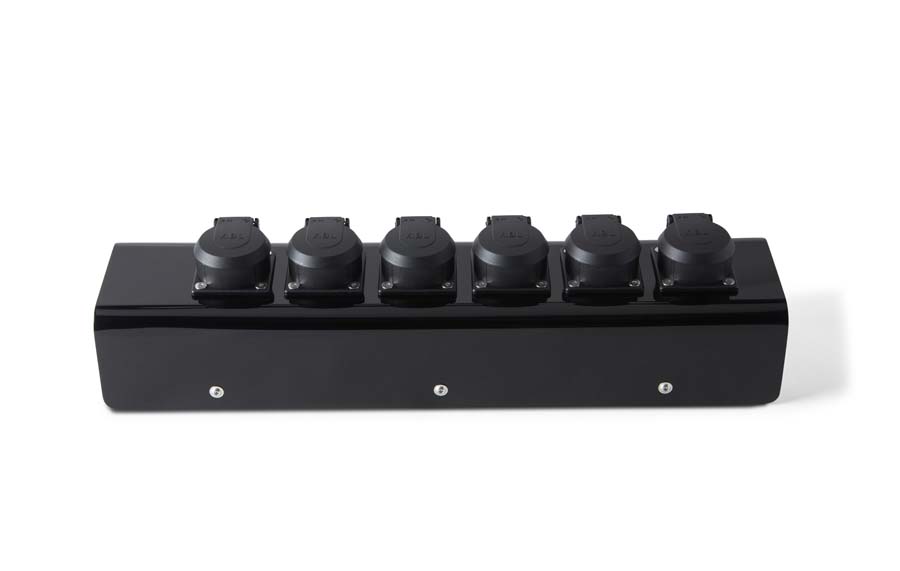
Livening up the mood a bit I put on another regular disc that I use in reviews; ‘Live – Busting Out’ from Jethro Tull. Recorded in 1978 during the group’s European tours, most of the album was recorded at Bern, Switzerland, on a 24-track reel-to-reel, and other tracks were done on a much cheaper semi-pro Tascam 80-8 8-track tape deck. Side 4 of this light-hearted two-LP album starts with a verse of “Pop Goes the Weasel”, going into “Cross-Eyed Mary”. Ian Anderson’s distinctive voice sings about a school girl charging underage services to rich men and giving the money to the poor; a sort of female Robin Hood. The intro certainly gives a visualization of a forest and days before electricity and petrol-powered vehicles. This is a great album with lots of different instruments and well-positioned soundstage, and the Six Star pulled it off very well. The RFI focused everything better but it felt a tad slower. Turning off the RFI filter in “Aqualung” made it brighter and “breathe” easier, though the real meaning of this word in the song is the slang connotation of beggars and crestfallen humans.
I wouldn’t say the RFI filter is an audible EQ unit, but it does sometimes affect the meaning of the music, and in most cases, I found it made it sound more natural. For example, without it the piano at the start of “Locomotive Breath” was clearer but less authentic. The RFI filter does improve mids and bass detail but also has the effect of “controlling” the tops slightly, pulling it into order. I found it hard to decide which I liked best, like deciding on clothing; should it be “with” or “without” the hat? The aeroplane fly-past in the final “Dambusters March” was more effective without the filter, though it took away some of the bass grunt that the filter provided. My confusion as to what was the best led me to conclude that I felt if you bought the Star Six with the RF Filter, then add the (now standard) switching option – like the review sample – so that you could choose if and when to use the filter. After writing this review I suggested this to Michael, and indeed, he had come to the same conclusion after discussing with a purchaser of the unit and a couple of HiFI dealers. Not the first time I have suggested something in a review that later comes to fruition.
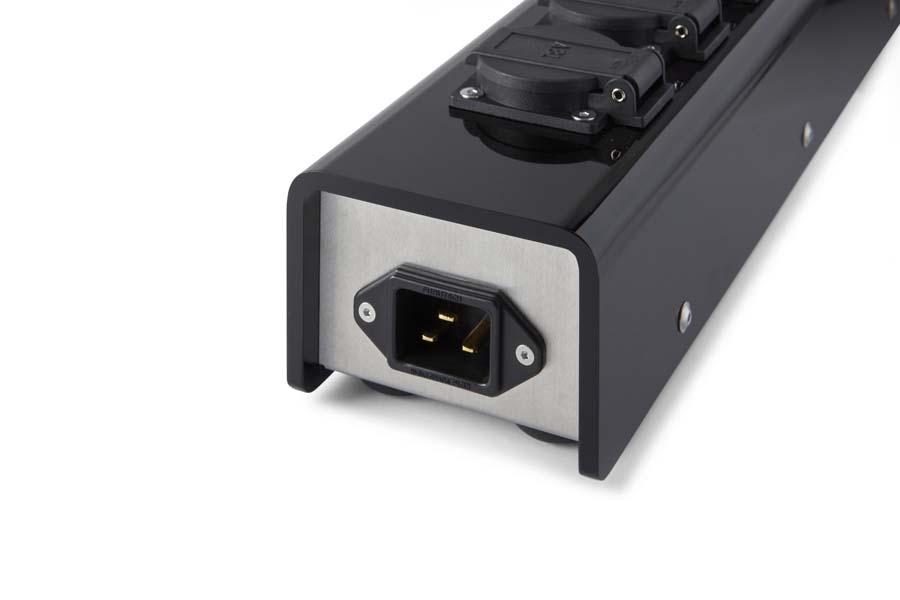
Turning to Beethoven’s Piano Concerto No.3 (Philips – Bernard Haitink and the Concertgebouw Orchestra/Claudio Arrau piano), this was written just as he was beginning to get seriously deaf, and moves away from the restraint and politeness of his earlier concertos that still had more of a Mozart influence. This one is a bit bolder and with more passion. After the long instrumental introduction setting the scene, the piano moves things on a little further. The Six Star certainly gave a very clear and controlled rendition of this somewhat staid performance, showing just how good this mains block is. It really doesn’t add anything, which – after all – is the job of the perfect mains block. With the RFI filter added, the performance was more natural with a more pertinent bass end from the Steinway, and I felt it easier to listen to. This totally analogue performance was next replaced by a few CDs and digital sources to see how the RFI filter would work with them. It did control things very well, and probably worth the extra £90 if you have a lot of RF interference. For me, I would probably just have the Six Star. My regularly played Kate Bush “Prelude” and “Prologue” from ‘Aerial’ just worked great from my Krell CD player without the filter, but putting on the clumsily titled ‘Kiel Auditorium St Louis Missouri 14 February 1980’ from Canadian Hard Rock band Rush actually sounded better with the RF filter in place! In “Xanadu” the music was more controlled and easier to get closer to what the instrumentalists were trying to do in the music. The band has lots of heavy metal playing and cymbals, and so at louder playing levels the filter made it less painful! I was still trying to decide on the RF filter so played Wendy Carlos’s iconic synthesizer album from the 60’s “Switched on Bach”, written using Robert Moog’s newly introduced monophonic synthesizers. Since each note was recorded separately to build up the “polyphonic” score of Bach’s music (indeed, very simply put, Bach’s style was of interdependent monophonic melodies that all joined together to make the polyphony) the music can sound rather confusing, but the RF filter just held it all together in perfect harmony.
CONCLUSION
The Six Star is an excellently crafted mains divider offering a low-priced way of powering up all your equipment. On its own it didn’t add nor take away anything from the music, but with the RFI filter created a better noise floor and slightly improved bass handling and detail, and the top was less tizzy. Sometimes, though, I felt that top end just lost a very little of the excitement that I really wanted to hear. All in all, though, it is very much worth investigating, with or without the filter.
AT A GLANCE
Build Quality:
Well-constructed design with good ABL sockets and silicone isolation feet
Sound Quality:
Very tidy and accurate performance.
With the RFI filter added, had improved noise floor and soundstage clarity, especially in the mid frequencies
Value For Money:
£669 as the starting point for a C14 IEC socket 6-way block is indeed very good value
We Loved:
Tidy performance adding nothing to the sound.
Excellent build and design
Improved bass detail from the optional RFI filter
Good quality silicone feet
We didn’t Love so much:
Nothing at this price.
But still unsure about the RFI filter, but now comes with an on/off switching option
Elevator Pitch Review: Seems only recently I was talking about good-quality British mains extension blocks and BMUs, and this one from Connected Fidelity certainly is no exception. Very well crafted inside and out, this is excellent value for the audiophile who is perhaps still too shy to spend all his wages on a mains extension block. Adding the RFI filter, or better still, the AC-2K Balanced Mains Unit, and you really will be improving your music and video.
Price: £669 (C14 IEC); £689 (C19 IEC) plus £90 for RFI filter.
Unity 1 mains lead £137.40 (1m)
Unity 2 mains lead £504 (1m), as used in this review.

Janine Elliot
SUPPLIED BY CONNECTED FIDELITY
System used:
Pre-Audio GL-1102N/Ortofon Kontrapunkt b (turntable/cartridge); Manley Steelhead (phono-stage); Krell KPS20i (CD); Music First Audio Baby Reference pre-amp, Synthesis Roma 98DC valve (amplification); Wilson Benesch Arc and Torus sub with Townshend Supertweeter, Graham Audio LS5/9 with Townshend Supertweeter (speakers); Tellurium Ultra Silver 2 and Townshend F1 and Isolda cables, Coppice Audio stand and Townshend rack.


















































